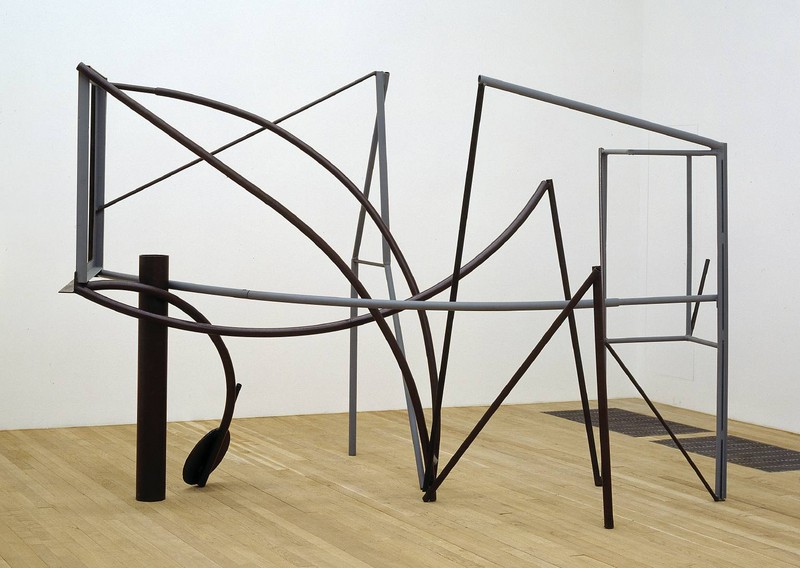Anthony Caro
08 Nov 2014 - 05 Oct 2015

Sir Anthony Caro
Emma Dipper 1977
Painted steel
object: 2130 x 1700 x 3200 mm
Presented by the artist 1982© Anthony Caro/Barford Sculptures Ltd
Emma Dipper 1977
Painted steel
object: 2130 x 1700 x 3200 mm
Presented by the artist 1982© Anthony Caro/Barford Sculptures Ltd
Sir Anthony Caro, who died in December 2013, was one of the most significant sculptors of his generation, pioneering a new means of expression through his innovative use of industrial steel.
In a career of great versatility lasting over sixty years, Caro challenged a number of the conventions of modern sculpture. In the early 1960s, he placed works straight on the floor, rather than elevating them on a plinth, establishing a more direct relation with the viewer. Their brightly painted surfaces were a similarly radical departure from sculptural orthodoxy at the time, with shockingly contemporary colours that reflected the influence of Caro’s wife, the painter Sheila Girling. These developments took place as part of Caro’s creative dialogue with American artists, especially David Smith, while as a teacher at St Martin’s School of Art he encouraged the so-called ‘New Generation’ of British sculptors who emerged in the mid-1960s.
The two sculptures in this room belong to the remarkable period in which Caro developed his mature practice. Yellow Swing 1965 follows the approach established in his breakthrough work Early One Morning 1962, which is concurrently on display at Tate Britain. In both works, the rods and planes of steel project into space, expanding the reach of the sculpture beyond its physical mass. While Caro’s use of industrial elements can appear open to chance, his works were carefully planned, sometimes over an extended period.
Emma Dipper 1977 was made while Caro was on a residency at Emma Lake in Saskatchewan, Canada. His pragmatic choice of lightweight rod and tubing resulted from the rural setting and relatively limited equipment available to him. From these constraints, Caro conjured a work of extraordinary freedom, akin to drawing in space.
Sir Anthony Caro (1924–2013) was born in London, where he lived and worked.
Curated by Matthew Gale
In a career of great versatility lasting over sixty years, Caro challenged a number of the conventions of modern sculpture. In the early 1960s, he placed works straight on the floor, rather than elevating them on a plinth, establishing a more direct relation with the viewer. Their brightly painted surfaces were a similarly radical departure from sculptural orthodoxy at the time, with shockingly contemporary colours that reflected the influence of Caro’s wife, the painter Sheila Girling. These developments took place as part of Caro’s creative dialogue with American artists, especially David Smith, while as a teacher at St Martin’s School of Art he encouraged the so-called ‘New Generation’ of British sculptors who emerged in the mid-1960s.
The two sculptures in this room belong to the remarkable period in which Caro developed his mature practice. Yellow Swing 1965 follows the approach established in his breakthrough work Early One Morning 1962, which is concurrently on display at Tate Britain. In both works, the rods and planes of steel project into space, expanding the reach of the sculpture beyond its physical mass. While Caro’s use of industrial elements can appear open to chance, his works were carefully planned, sometimes over an extended period.
Emma Dipper 1977 was made while Caro was on a residency at Emma Lake in Saskatchewan, Canada. His pragmatic choice of lightweight rod and tubing resulted from the rural setting and relatively limited equipment available to him. From these constraints, Caro conjured a work of extraordinary freedom, akin to drawing in space.
Sir Anthony Caro (1924–2013) was born in London, where he lived and worked.
Curated by Matthew Gale
